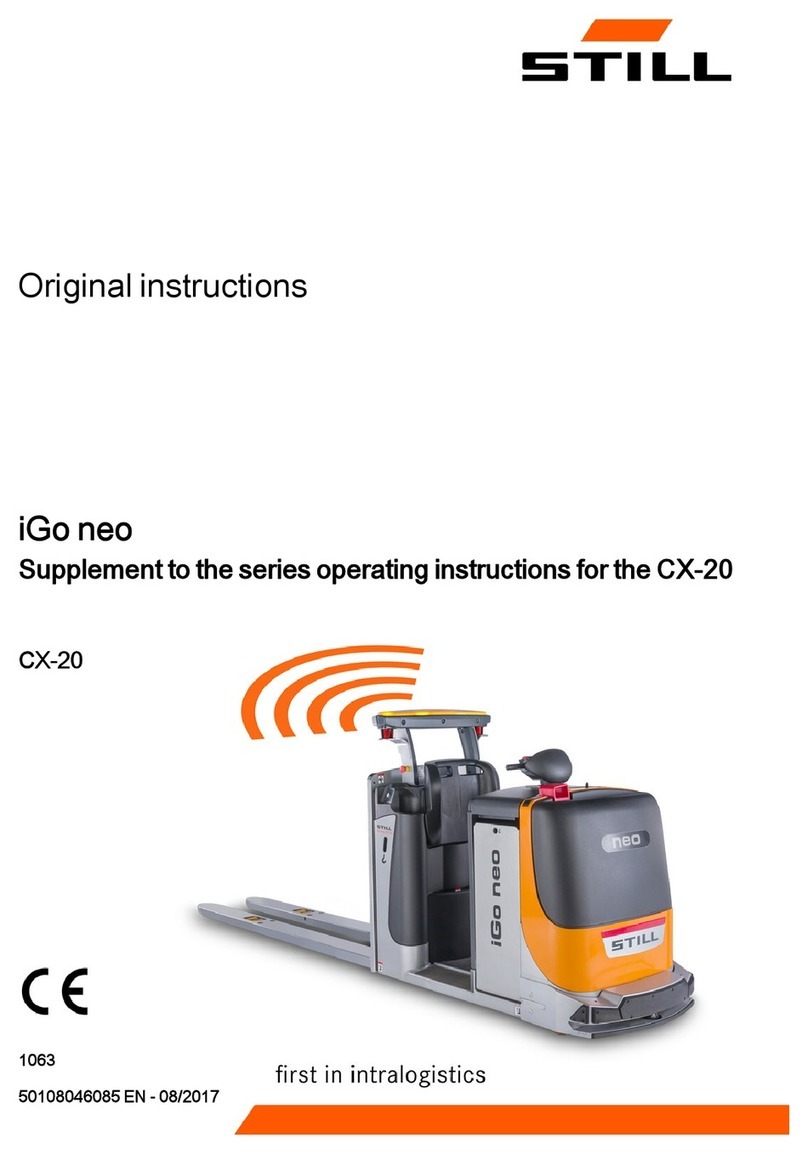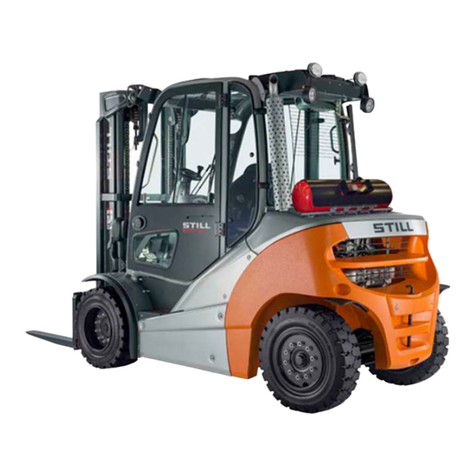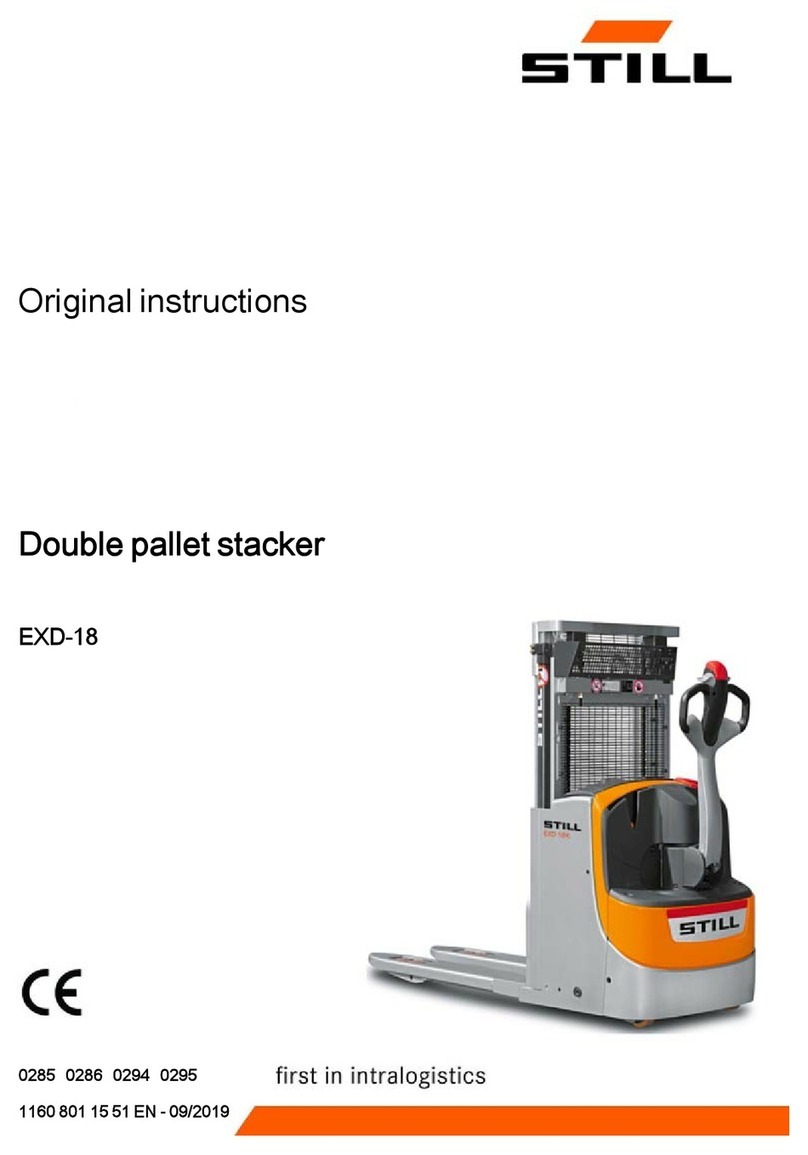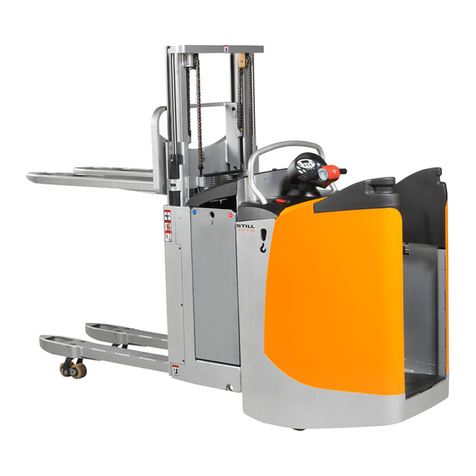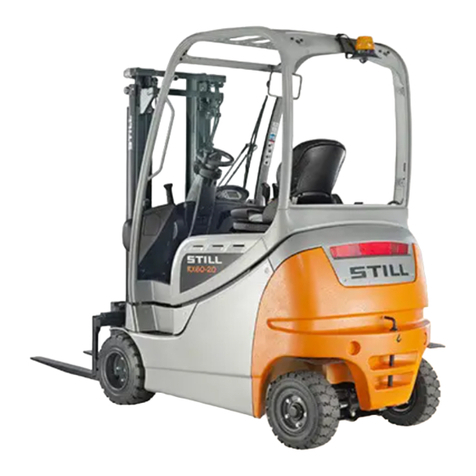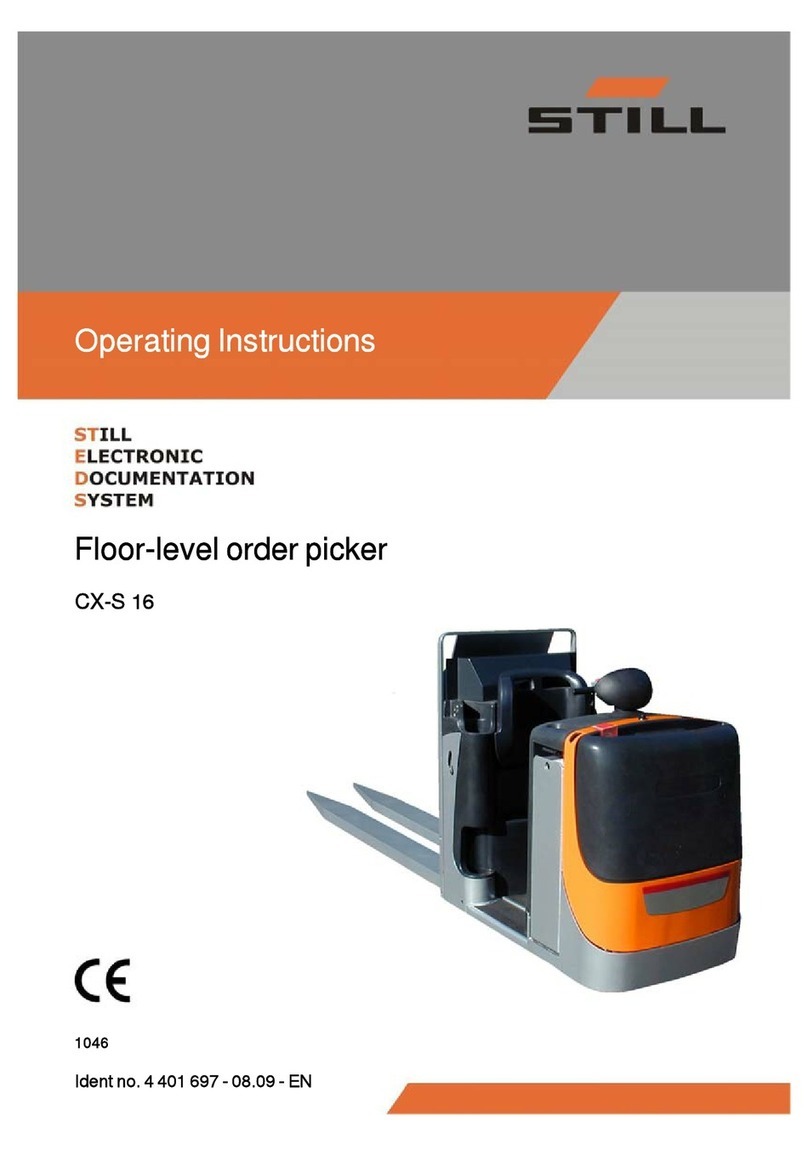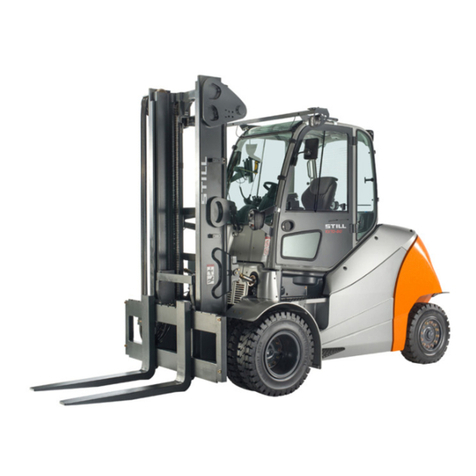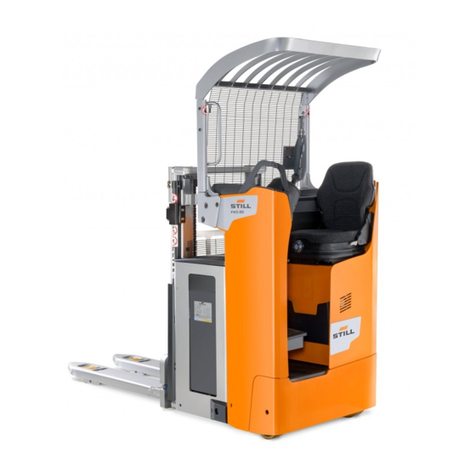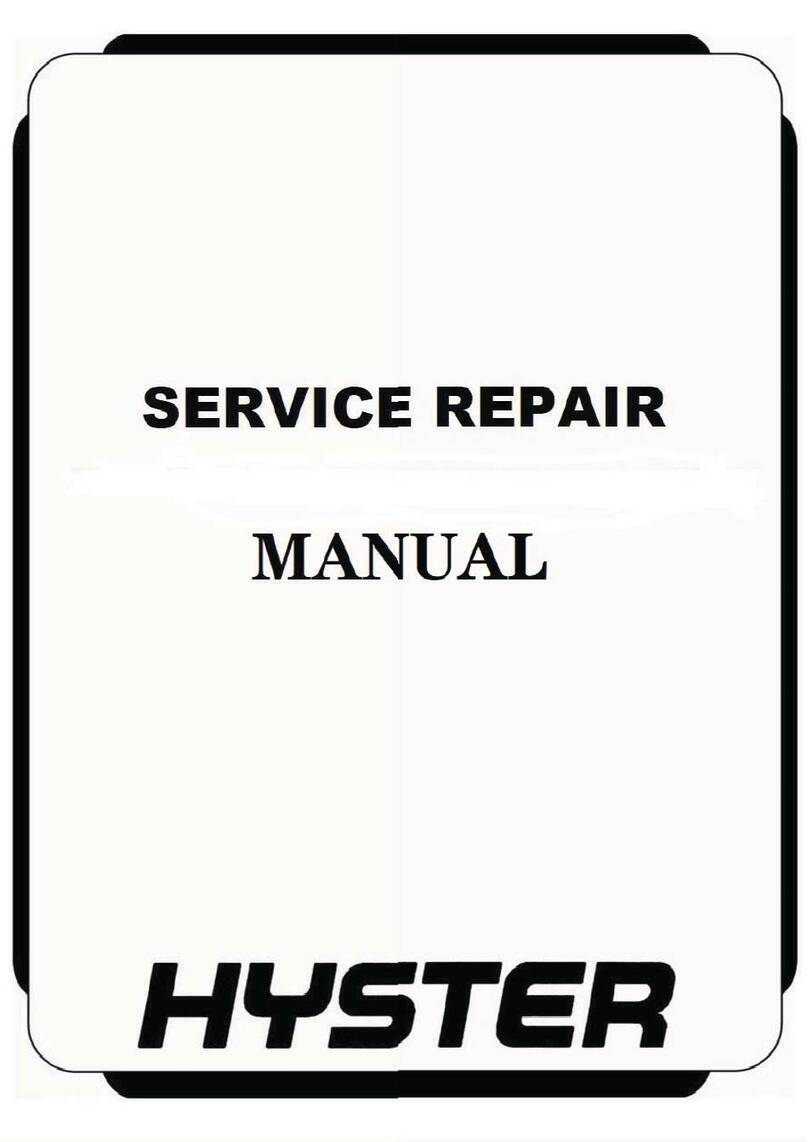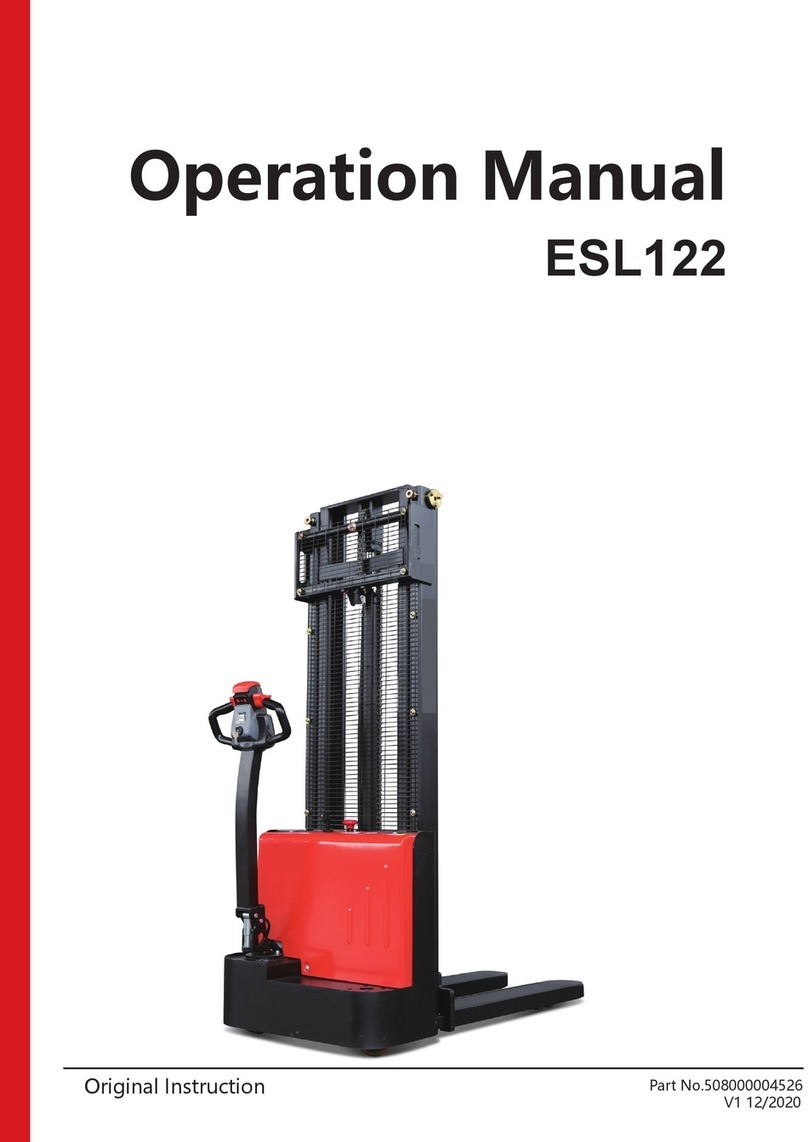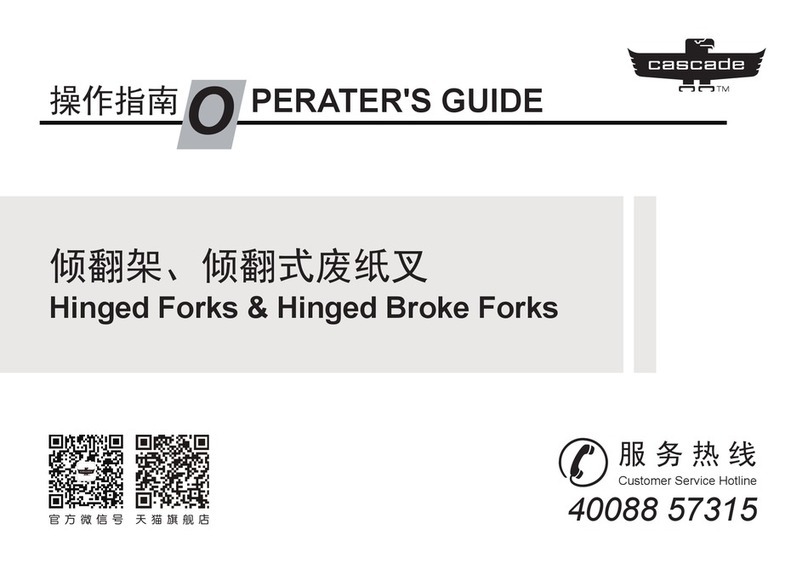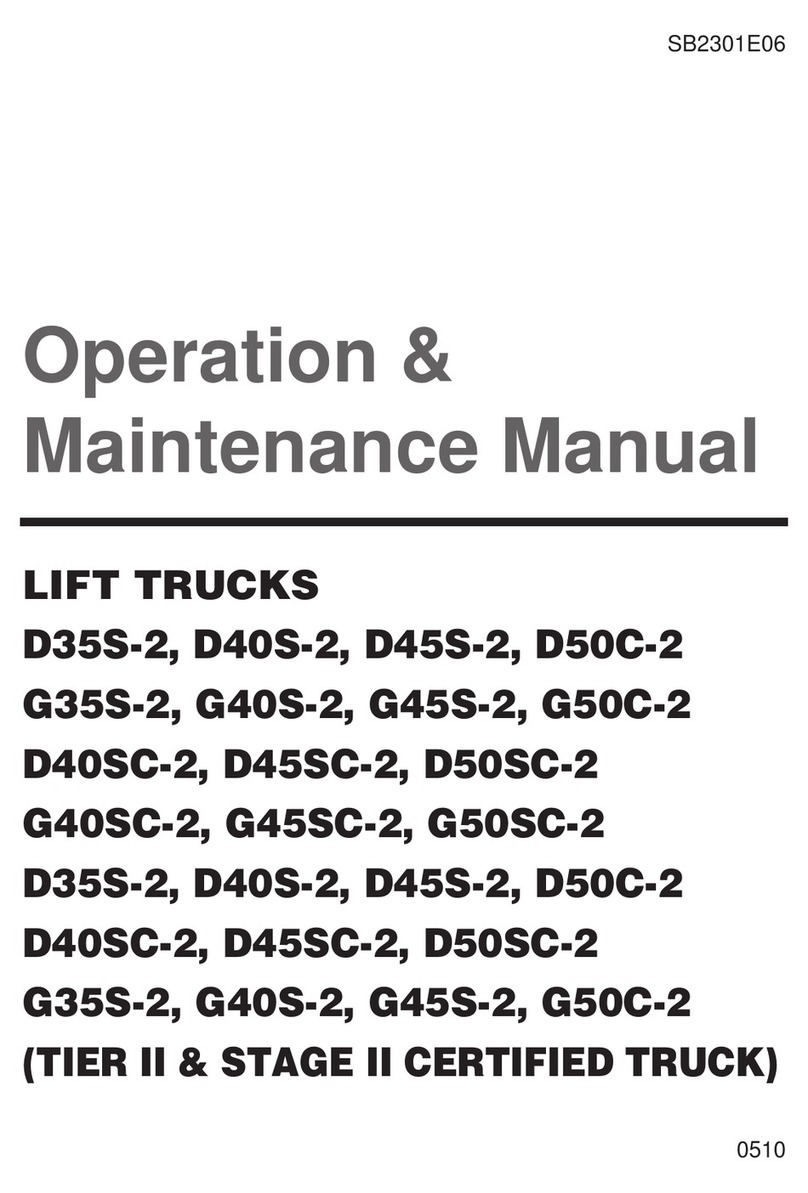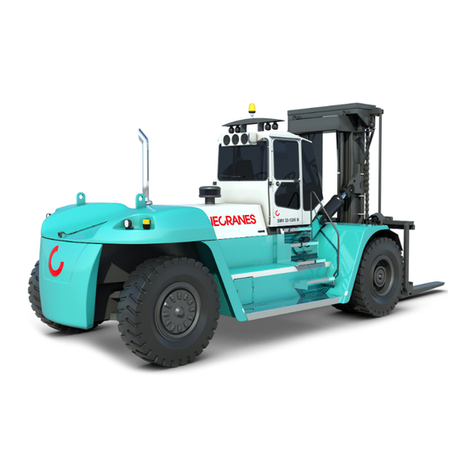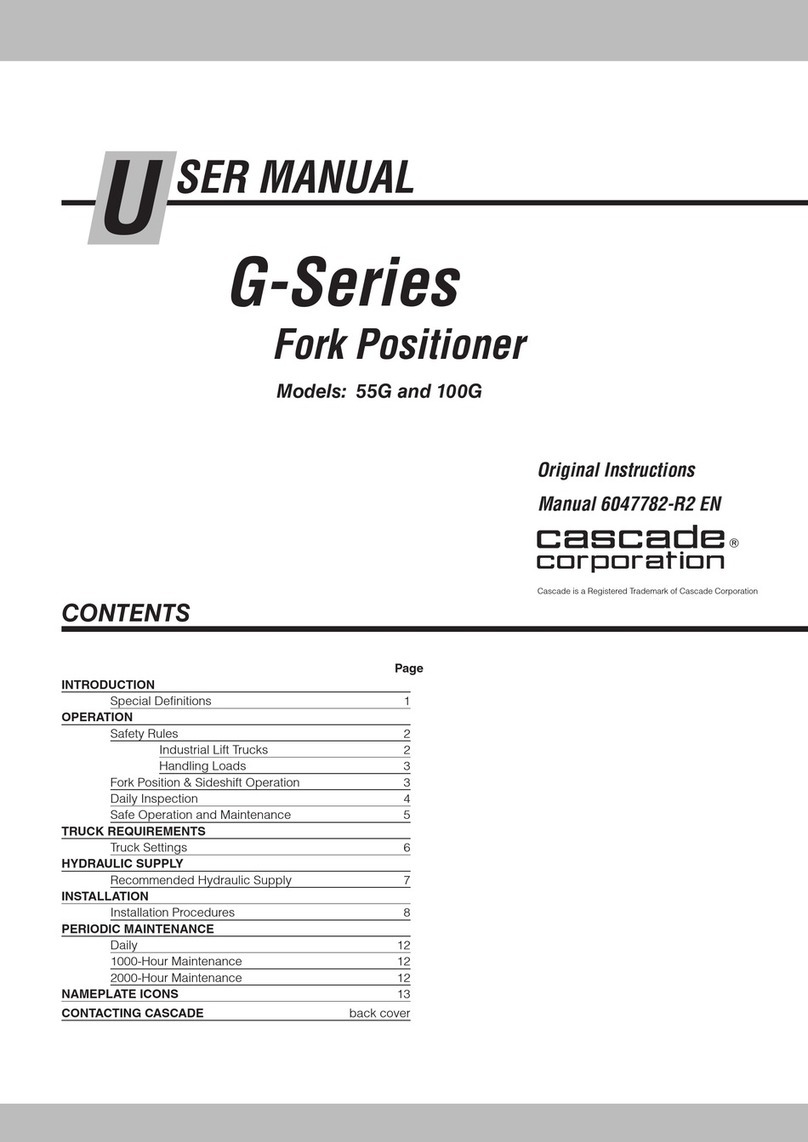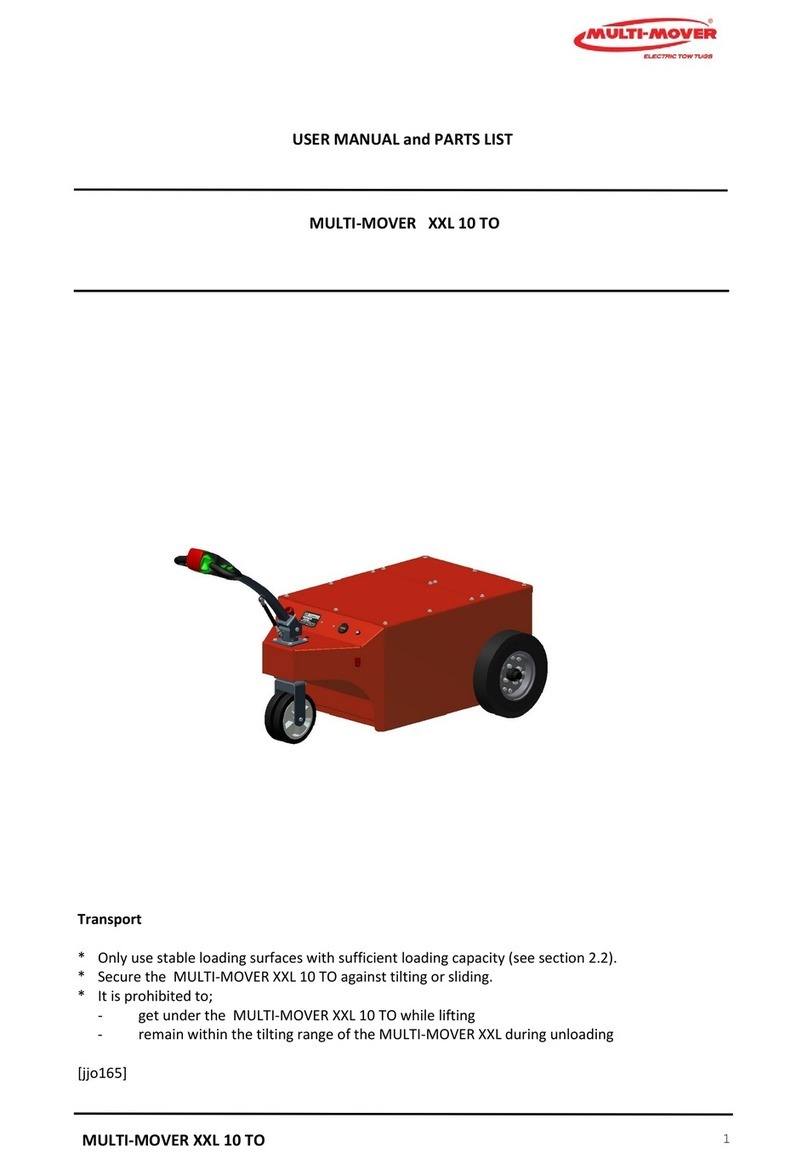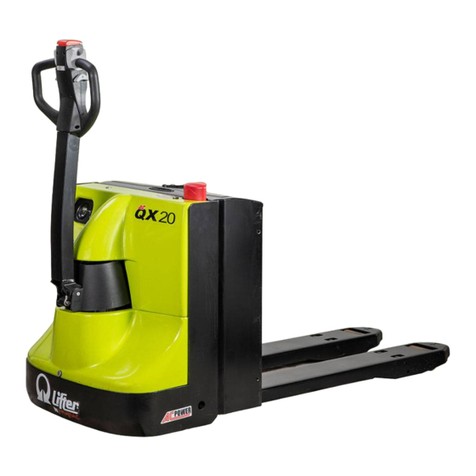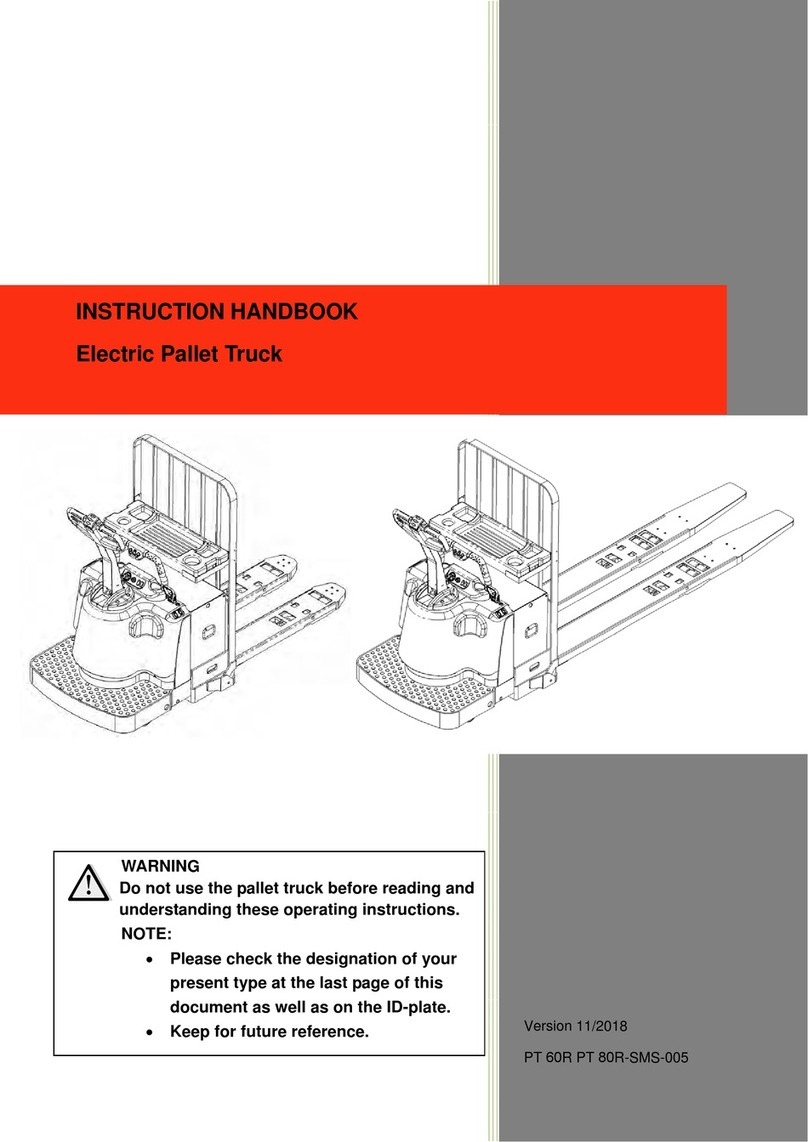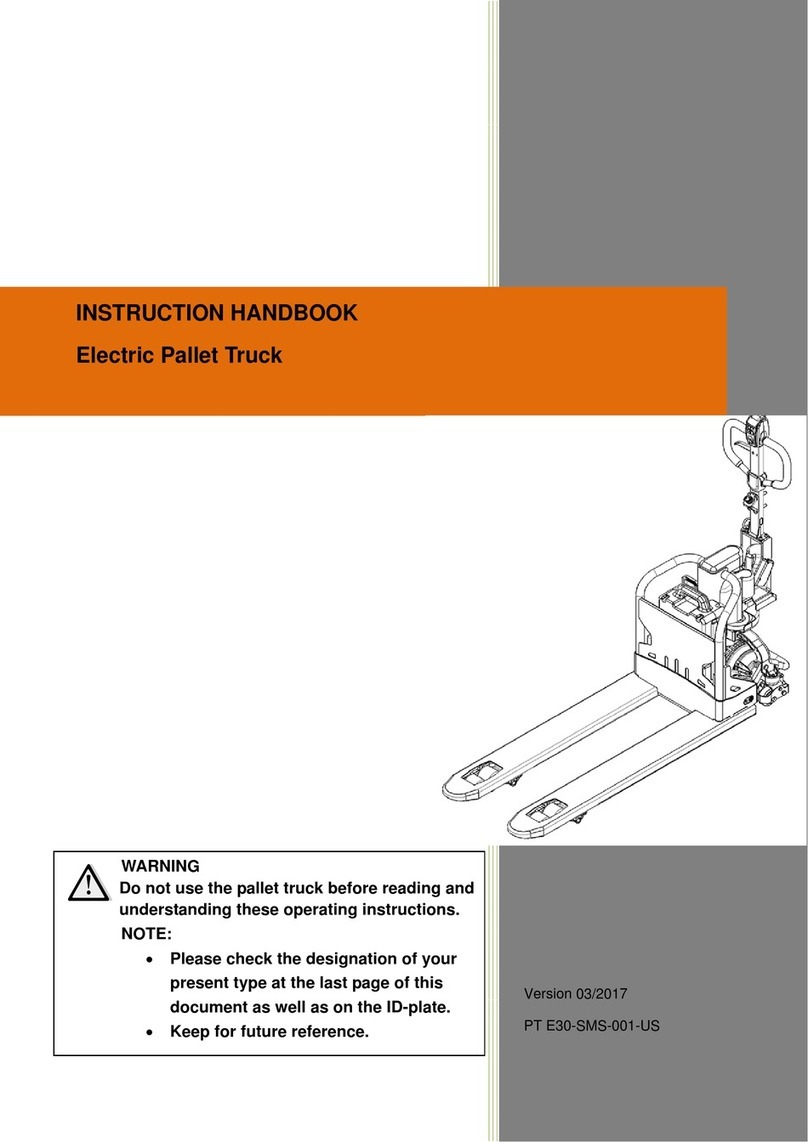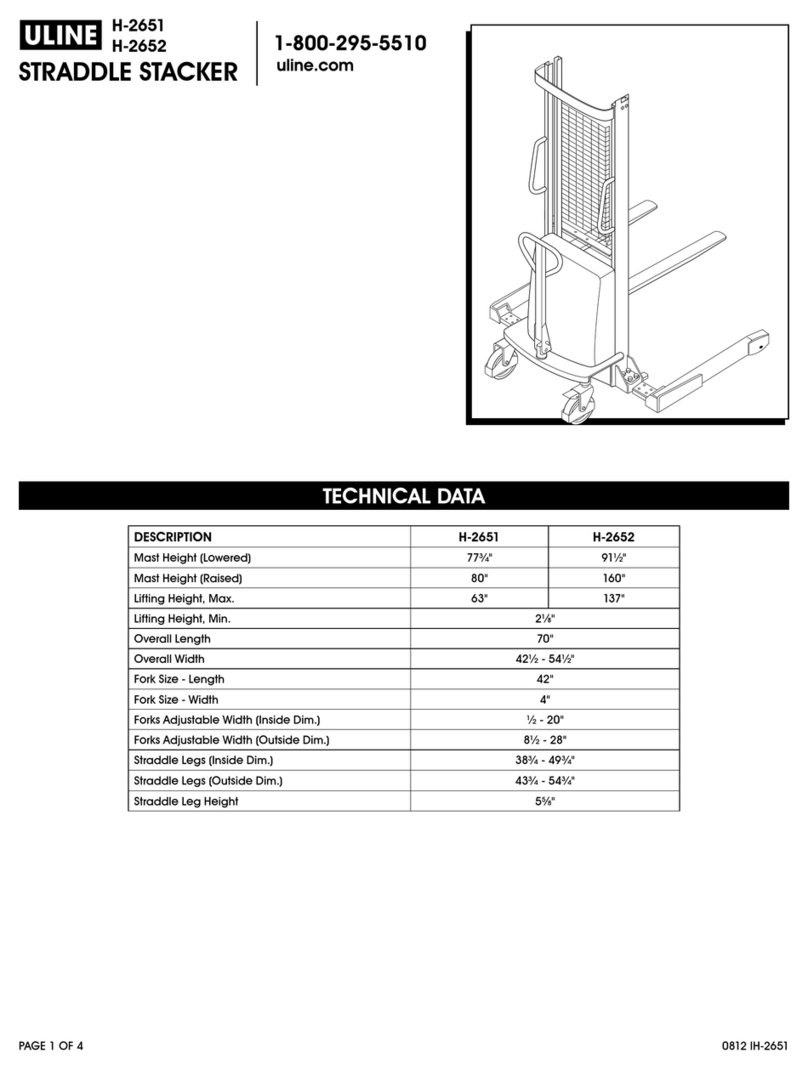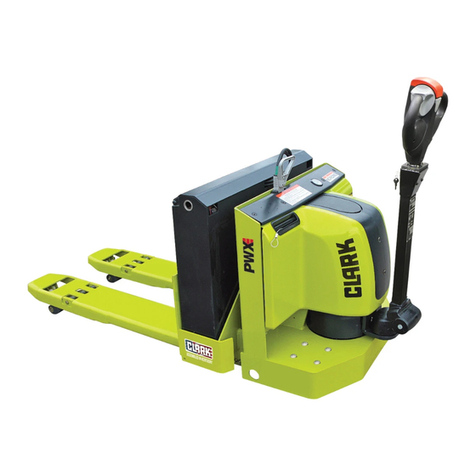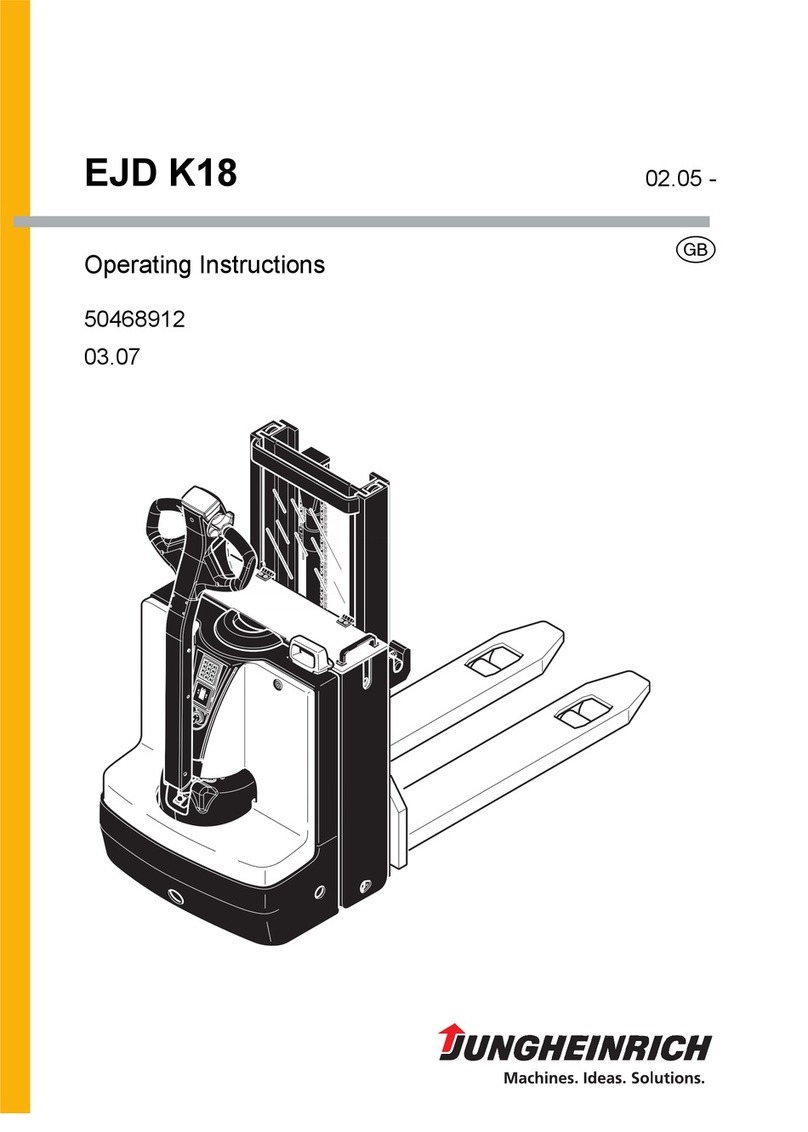
TABLE OF CONTENTS
Keyboard ............................................................................................................... 34
Battery indicator ............................................................................................... 35
Error messages ................................................................................................ 35
Warnings................................................................................................................ 36
Functions............................................................................................................... 36
Change language............................................................................................ 36
Driver parameters........................................................................................... 37
Trucks equipped with options................................................................. 38
10 DRIVING INSTRUCTIONS......................................................................... 45
Starting the truck ............................................................................................. 45
Driving instructions......................................................................................... 45
Switching off the truck.................................................................................. 47
Normal or crawler mode............................................................................. 48
11 GENERAL LOADING AND UNLOADING
INFORMATION.................................................................................................... 49
Responsibility for the load ........................................................................ 49
Responsibility for others............................................................................. 49
Maximal load ...................................................................................................... 49
Picking up a load ............................................................................................. 49
12 STACKING.............................................................................................................. 50
General................................................................................................................... 50
Trucks with reach capability .................................................................... 50
Trucks with mast tilt ....................................................................................... 50
13 MAINTENANCE OF THE TRUCK........................................................ 51
Daily maintenance (before each shift)............................................. 51
Daily Service (after each shift) .............................................................. 51
Weekly inspection ......................................................................................... 52
Preventive maintenance ............................................................................ 53
14 SERVICING AND MAINTENANCE ..................................................... 54
Service personnel........................................................................................... 54
Safety instructions for maintenance.................................................. 54
Maintenance intervals.................................................................................. 54
Maintenance instructions........................................................................... 61
15 SAFETY REGULATIONS............................................................................ 67
The authority and obligations of the truck
driver.................................................................................................................. 67
Getting in and out............................................................................................ 67
Driving the truck ............................................................................................... 67
Instruction Handbook UFW — D008453, B, GBR, ForTranslation




